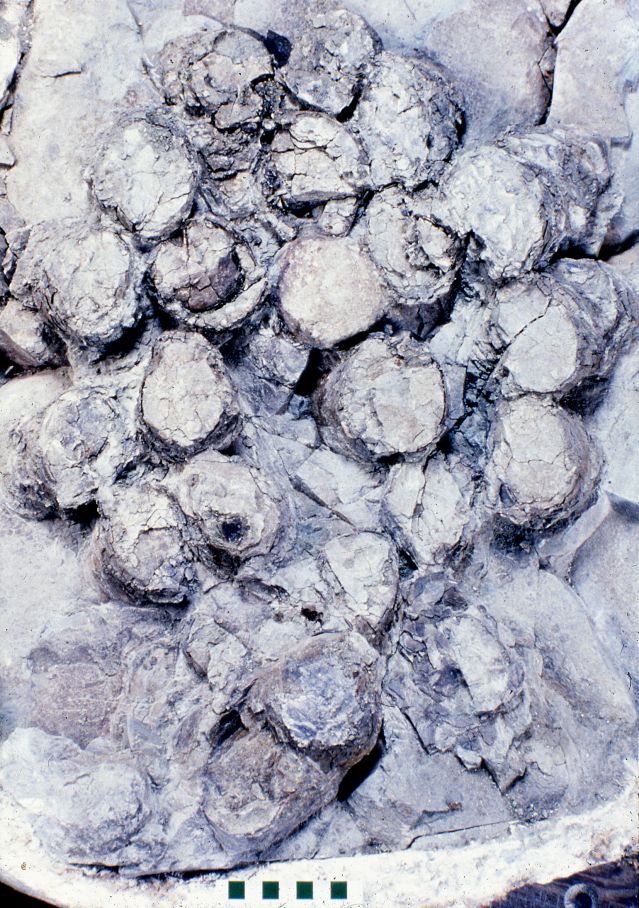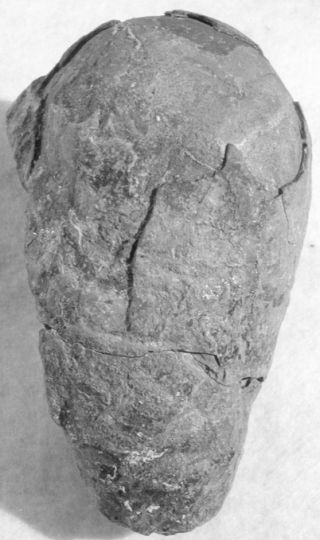
Parenting
The Chicken or the Egg? Is a Bird a Bird or a Dinosaur?
How old is parental care?
Posted April 23, 2013

Who knew a dinosaur nest could reveal so much?
Sometimes a scientific discovery comes along that is irresistible because it is simply so much fun. “It’s the age-old question: which came first, the chicken or the egg?” says David Varricchio of Montana State University. Working with Montana State colleagues Frankie and Robert Jackson and Darla Zelinketsky of the University of Calgary, Varricchio recently published new and compelling findings on dinosaur reproductive behavior in the journal Paleobiology.
Until 1979, the scientific world didn’t know much about dinosaur eggs and knew even less about dinosaur reproductive patterns. That was the year in which Jack Horner (also of Montana State University) and Robert Makela (who has no university affiliation) made headlines by reporting that they had found dinosaur nests containing baby dinosaur bones and eggshells in Montana. The species of dinosaur was named Maiasaura peeblesi – meaning “good mother dinosaur found by the Peebles family”. Horner and Makela were able to show four remarkable things.
First, dinosaurs not only laid eggs, but they laid eggs in clutches inside scooped-out nests. Two, the nests were dotted across a large area, spaced about one-mother-dinosaur’s body length apart. These were communal nesting areas, such as are seen today among birds like flamingoes and penguins. Third, the “good mothers” engaged in parental care, because the baby dinosaur bones were just a bit older than hatchlings – indicating they stayed in the nest for some time and had to have been fed by their mothers. This is why nests had to be one-adult-maiasaur’s body length away from the next one: to prevent the stealing of plants brought to one group of baby dinos by the mother of another group. Finally, the admixture of fresh and aged nests showed that the nesting grounds were used over and over again. Dinosaurs practiced site fidelity.
This discovery was one of those that transformed dinosaur studies into the exciting field of dinosaur biology.
Since then, dinosaur nests laid by a wide range of species have turned up. A few years after the discovery of the Maiasaura nesting ground in Montana, Horner and others reported on clutches of eggs belonging to a meat-eating dinosaur, Troodon.
Things were different in Troodon nests, however. A lack of trampling and the scarcity of young but post-hatchling dinosaur bones in the nests suggested that Troodons were born more mature than maiasaurs . Studies of embryonic skeletons in unhatched eggs confirmed the idea that troodons left the nest promptly after birth, unlike plant-eating maiasaurs.
No one detected any signs of parental care in Troodon nests at first. Horner and colleagues suggested that Troodon might have laid their eggs in a partly-buried orientation, and then covered them up with decaying plant matter that would produce some warmth & shield the eggs from large temperature fluctuations. This is what crocodiles and unusual birds like the large (and very dinosaur-like) bush turkeys in Australia do. They don’t sit on nests, they don’t feed hatchlings, they simply deposit their eggs in favorable conditions, top them off with a nice pile of leaf litter, and go on their merry way.
Troodonnests each hold up to 24 eggs, but -- like the chicken eggs you buy in the store -- dinosaur eggs are not symmetrical. They have one fat end and one narrow end and they are always arranged in the nest narrow-end down. Like chicken eggs, dinosaur eggs also have pores that permit the exchange of gas and water vapor while the embryo develops. But the number, size, and placement of pores reflect nesting habits. Crocodiles and birds that bury their eggs & leave them fully covered have lots of big pores, to allow for gas exchange in a closed environment. Birds that brood their eggs have fewer pores on their eggs; gas exchange is easier in an open environment and enough water must be retained inside the egg to prevent it from drying out.
Troodon eggs showed some fascinating features. When whole clutches were found, the sediments covering the bottom (narrow) end of the eggs differed from those covering the top, indicating that the eggs were at least partially buried at laying but that whatever covered the top of the nest (parent or leaf litter) was different. Varricchio and his team studied pore size and placement on intact clutches of Troodon eggs. The wife and husband team Frankie and Bob Jackson painstakingly analyzed thin sections of the eggshells, counting pores and calculating porosity. They concluded that the overall ability for water loss through the eggshell was very low. Also, the pores were concentrated on top end of the eggs, which were in a more open environment than the (buried) bottom of the eggs.
Even if post-hatchling care of troodons was limited, parental care of egg-bound troodons was devoted.
And, as Varricchio points out, brooding in Troodon – a member of the group that eventually gave rise to birds – means that this behavior originated millions of years before birds evolved. There’s no longer much room for doubt: the egg came first.

A single Troodon egg holds many secrets



